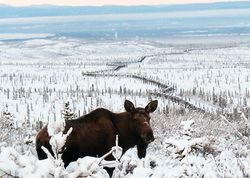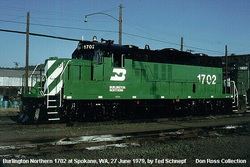





In addition, the movement of oil by pipeline can be as low as $2/barrel, whereas by train, as high as $15/ barrel. The pipelin is capabale of moving 830,000 barrels/day. 24/7
Please do your homework next time Mr. President.
 In early July of this year, a runaway dedicated freight train carrying more than 70 tanker cars of oil (700 barrels/car, 42 gallons/barrel) de-railed into Lac-Megantic, Quebec, killing 47, and causing 1200 people to be evacuated from this small Canadian Town. It was amongst the worst rail disasters in Canadian history. One estimate put the damage in excess of $200 million. Was President Obama responsible for this? Of course not, but he may be partially to blame for one in the future. Why?  Before I answer that question a little history about this month’s topic, the Keystone Pipeline; but 1st, the Alaskan pipeline. Construction on the Alaskan pipeline was approved by Congress in 1973. The 800 mile pipeline, extending from Prudhoe Bay to Valdez was completed in the next three years. Of the 800 mile length, half of the pipeline is underground and ½ is above ground, the reason being half of the route is permafrost. The pipeline is 4 feet in diameter, 5/8’s of an inch thick, and is surrounded by 4 inches of insulation. At its maximum, 12 pumping stations along the pipeline propelled 2.2 million barrels of oil per day into the port of Valdez. It is currently down to 600,000 barrels /day, and 7 pumping stations are in use. It is a safe, inexpensive and efficient way to transport oil with minimum environmental effect. The Caribou herd has increased an average of 8%/year since its construction and in a recent trip to Alaska (May of this year), I found that the pipeline actually attracts animals (especially in the winter) because of its warmth. The oil is approximately 140 degrees when it comes out of the ground, and by the time it reaches Valdez (a 5-7 day trip), it is 40 degrees in the winter and 60-70 in July (it’s said there are only two seasons in Alaska, winter and July).  The only alternative to the pipeline would be by ship or construct a rail line. Valdez is the northernmost, ice free Pacific port in the world. It is a natural fjord with a depth of 800 feet allowing ships to dock year round entering from Prince William Sound. We cannot say the same for Prudhoe Bay where the oil originates. The port is only ice free from April to October depending on weather patterns; i.e., there would be no flow of oil in the winter. Literally everyone agrees that the environmental impact of a railroad line would have been considerably more than the pipeline construction particularly during the winter when the temperature can reach 40 degrees below zero Fahrenheit.  Let’s now fast forward to January 2012 when president Obama doesn’t approve construction of the Keystone pipeline. The proposed length of the pipeline in the United States was 1,380 miles long, it would have been 36 inches in diameter and would have almost exclusively been built 4 feet underground. It would have transported 700,000 barrels of oil/day from the Bakken(North Dakota) & Canadian oil fields to storage in Oklahoma, and ultimately, to Port Arthur, Louisiana and Houston Texas for transport. Estimates predicted it would have provided 13,000 to 20,000 jobs over the life of the project (the unemployment rate was over 8% at the time) and would have injected more than $12 billion into the economy (one estimate was at $20 billion given the multiplier effect). Why then did the president not approve the project?  The Sierra club and other environmentalist groups were strongly against the project (pick an energy source and there is an environmentalist group against it somewhere). They felt that that the refining of oil from the shale/sands of the Bakkens would generate 5-20% more CO2 than west Texas Intermediate. As a result, they were hoping that by defeating the pipeline, this would also spell the end of oil from the Bakken shale region. Seriously? Of course this didn’t happen. The oil is now being transported by rail and that railroad is primarily Burlington Northern, a unit of Warren Buffet’s Berkshire Hathaway (BRK.A, ticker symbol) of Omaha. The oil is being transported by dedicated trains (that is a train carrying just 1 commodity similar to the one that crashed in Lac-Megantic) and Burlington Northern, according to Mr. Buffet on a recent interview on CNBC, is transporting more than 550,000 barrels of oil/day. This was obviously a huge windfall for Warren Buffet, one of the president’s biggest supporters. As a result, the oil is still being refined, there is the added pollution from the trains (there can be as many as 5-7 diesel locomotives/dedicated train), at least 13,000 jobs were lost and $12-$20 billion in foregone GDP, and it is much more expensive and dangerous to transport oil by train than pipeline.  Put another way, by vetoing the Keystone pipeline, the President has increased the amount of pollution, increased the price of gas and heating oil, retarded the economy, helped a supporter (Warren Buffet) financially, continued our dependency on foreign oil and increased the danger to the population by transporting oil by rail as opposed to a pipeline. In addition, the movement of oil by pipeline can be as low as $2/barrel, whereas by train, as high as $15/ barrel. The pipelin is capabale of moving 830,000 barrels/day. 24/7 Please do your homework next time Mr. President.
2 Comments
|
AuthorJohn Tommasi is a retired Senior Lecturer of Economics & Finance from Bentley University and the University of New Hampshire. Archives
February 2023
Categories |